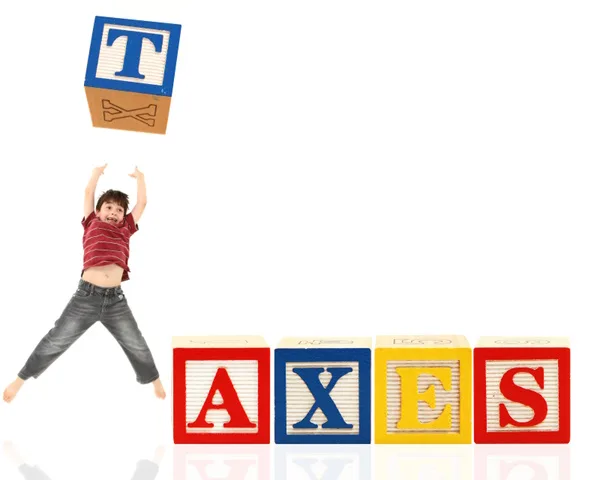Understanding the Various Child Tax Credits after Divorce
Updated by Tracy Achen | Written by Noah Rosenfarb
In general, there are four different types of child tax credits that divorcing parents should understand before resolving which parent will claim the dependency exemption and/or how joint custody should be addressed in a divorce agreement.
- The Child Tax Credit
- The Child and Dependent Care Credit
- Earned Income Credits
- Education Tax Credits
Since the time this article was originally published, the Tax Cuts and Job Act changed some aspects of the credits. And the 2025 Big Beautiful Bill also made some of these changes permanent. The article has been updated to reflect the changes.
Child Tax Credit (For Parent Claiming Dependent)

The Child Tax Credit is meant to reduce your tax bill and you may be able to claim a tax credit of $2200 (starting in 2026 and indexed for inflation) for each qualifying child. To qualify for this credit, the child must:
- be claimed as a dependent on the parent's tax return,
- be under the age of 17 at the end of the tax year,
- live with the parent claiming the credit for more than half the year, and
- have a valid Social Security number.
To be able to claim the credit, the parent claiming the credit must also have a valid Social Security number.
It's important to note that this credit is partially refundable, meaning if the credit exceeds the taxes you would owe, some of the excess could be refunded to you. The amount will vary, but is around $1700 and is adjusted for inflation.
To be able to claim the credit on your taxes, you must have earned at least $2500 in income to qualify for the refund. At the other end of the spectrum, the child tax credit is phased out if adjusted gross income is above $200,000 for Head of Household and Single filers and $400,000 for joint filers.
Child and Dependent Care Credit (Claimed by Custodial Parent)
If a custodial parent pays for care for a qualifying dependent that was age 12 or younger when the care was provided or for other dependents that are not able to care for themselves, then they may be eligible for the child and dependent care credit. To qualify, one must satisfy all of the IRS tests summarized below:
- You must keep up a home that the dependent lives in - paying at least half of the cost associated with owning and running the home.
- You must have earned income for the year, and the payments for care were required to earn income.
- You must identify the care provider on your taxes and they cannot be someone you could claim as a dependent (i.e. not an older child).
- Your tax filing status cannot be married filing jointly or qualifying widow(er) without a dependent.
This credit can be up to 50% of up to $3,000 of expenses associated with the care of one individual or up to 50% of $6,000 for two or more individuals. If the taxpayer's adjusted gross income is more than $15,000, they will receive less than the full credit (i.e. the "phase out" begins). However, for taxpayers with more than $43,000 of adjusted gross income, the credit is still 20% of qualifying expenses (i.e. up to $600 for one child, $1,200 for two or more).
Note this credit is not refundable. For more information, see Understanding the Child and Dependent Care Tax Credit from the IRS.
Earned Income Credits (Claimed by Custodial Parent)
The earned income tax credit (or EIC) is a refundable credit (meaning if the credit exceeds the tax liability, the IRS will refund the difference) that is often the most valuable of all the tax credits. For the custodial parent, the value can be slightly more than $4,200 if the taxpayer has one child to more than $8,000 for three or more children. To claim the credit, a taxpayer must have earned income of less than $59,999 with one qualifying child and up to $61,555 for three or more qualifying children.
People without children can also qualify for up to a $649 credit. There are other qualifying rules, for example, if you have more than $11,600 in investment income, then you cannot claim this tax credit. As was the situation with the Child and Dependent Care Credit, a worksheet is provided on the 1040 tax form to calculate the exact earned income credits
Education Tax Credits
There are two tax credits that presently apply to education - the American Opportunity Tax Credit ("AOTC") and the Lifetime Learning Credit ("LLC"). In any year, a parent claiming a dependent can only take one of the credits. You can find out more about these Education Credits from the IRS.
The American Opportunity Credit is meant to help offset the cost of higher education. If you are separated or divorced, the parent claiming the student as a dependent is the only one who can take the credit. The maximum AOTC is $2,500 per eligible student and is subject to phase out when modified adjusted gross income is over $80,000 (or $160,000 for jointly filed returns). 40% (up to $1000) of the credit is refundable. Note: the Protecting Americans Against Tax Hikes Act of 2015 made AOTC permanent.
The LLC is 20% of the first $10,000 paid for qualifying tuition and related expenses each year. The maximum credit is currently $2,000. Expenses for graduate and undergraduate work are eligible. There is no limit on the number of years that this credit can be claimed. The amount of the credit is phased out if modified adjusted gross income is between $80,000 and $90,000 ($160,000 and $180,000 if you file a joint return).
Conclusion:
Often it is the case that after divorce, one taxpayer can benefit from the above tax credits to a greater extent than the other. So, when negotiating a divorce settlement, learn how the various tax credits would benefit each party. Splitting dependency exemptions is a common practice, but may not take into account how the various tax credits benefit each taxpayer.
Understanding child tax credits is just part of the equation when doing your taxes after divorce. What your filing status is and which parent gets to claim the children as dependents is also important. The following articles offer more information about the various tax concerns that people have during and after their divorce:
